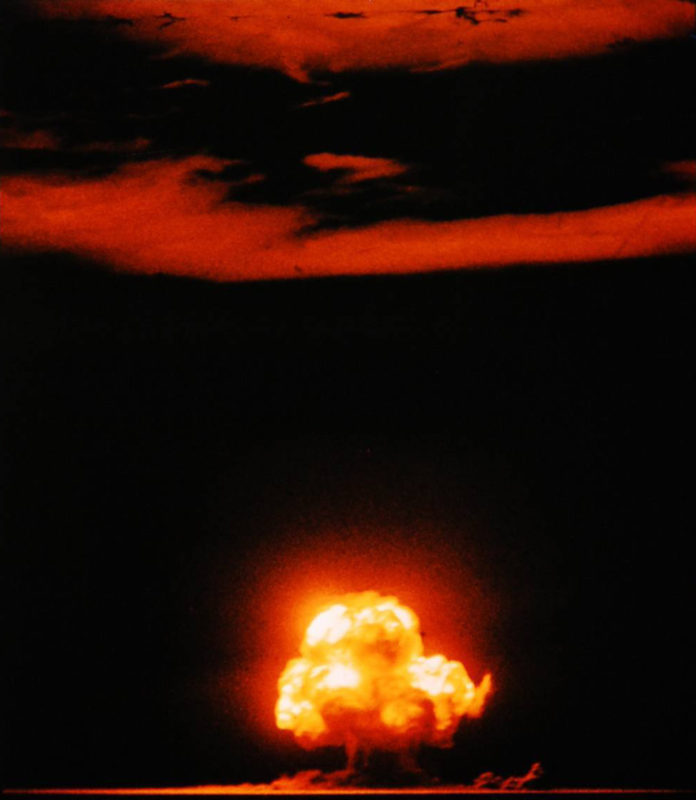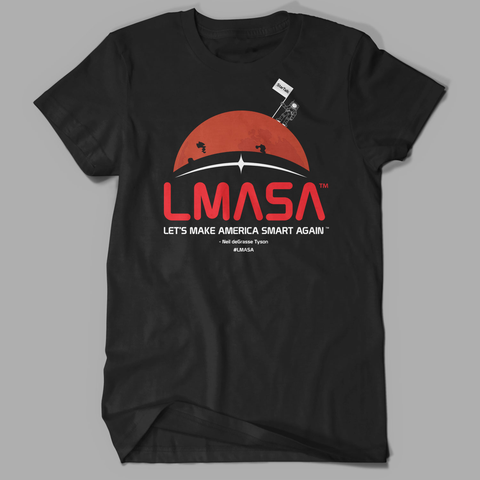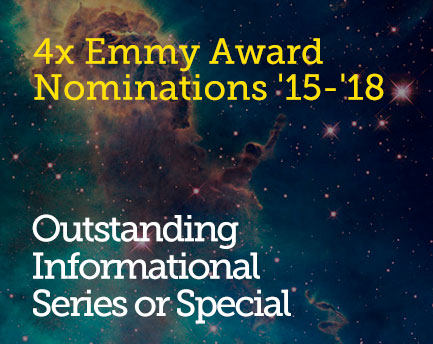March 4, 2017 10:00 pm
20 Immigrants & Refugee Scientists Who Made America Greater (Part 2)
Today’s guest blog post is by StarTalk intern Kirk Long. Kirk is majoring in physics while minoring in mathematics and piano at Idaho State University.
We’re all immigrants if you care to look back far enough.
Last week’s list focused entirely on American citizens, but this week’s list also has a few immigrants of other countries around the world, whose inventions and ideas have nonetheless made America (and the rest of the world) a better place. (If you haven’t read Part 1 yet, you really should. Click here.)
Niels Bohr — Nobel Prize-winning physicist
Niels Bohr – Special thanks to listener Tore Bolhøj, who pointed out on Facebook last week after he read part 1 that Bohr should make it onto the list. He’s totally right, and I can’t believe we missed Bohr the first time around. He fits in well with Part 2 here because Bohr was a Danish scientists who fled to England just before he was to be arrested by Nazis in occupied Denmark. Bohr famously helped many other refugee scientists escape the Axis in the 1930’s, and he joined the British mission to the Manhattan project towards the end of the war, which is the top secret US government program that gave us the atomic bomb. You’ve probably learned about Bohr and his model of the atom in your high school or college chemistry classes, and although his model has been supplanted by more accurate ones today, it still serves as an incredibly useful conceptual teaching tool when learning about the structure of the atom. Bohr won the Nobel Prize for his work in physics in 1922, and after the war was instrumental in helping start CERN, one of the most famous physics laboratories in the world and home to the Large Hadron Collider.

Photo of the first atomic bomb test, codenamed Trinity, By Jack W. Aeby, July 16, 1945, a Civilian worker at Los Alamos laboratory, working under the aegis of the Manhattan Project. [Public domain], via Wikimedia Commons.
John Dollond — inventor of the achromatic lens
John Dollond – If you’ve ever used a refracting telescope (the classic and oldest kind of telescope) you have used an instrument refined under the work of John Dollond. He was the son of a recent refugee when he was born in London, where he started life as a silk-weaver. In his spare time he learned about astronomy, mathematics, and physics, and eventually abandoned silk-weaving to pursue his true passion full-time. He did not totally invent the achromatic lens, but he did significantly refine them and made them his life’s work. He was granted the patent on the design and his work was instrumental in the advancement of optics.
Max Born — Nobel Prize-winning physicist
Max Born, like Albert Einstein, was born in Germany and working their just before the start of WWII. When Hitler rose to power his job was eliminated, and he quickly left Germany to seek refuge in England. He became a naturalized citizen there on the eve of WWII in 1939, and continued his research into physics there until eventually retiring to Germany after the war had finished and the dust settled. Born was an incredibly influential physicist — not only for his own work but for the students and colleagues he mentored, including Enrico Fermi and Werner Heisenberg. He was a pioneering scientist in the field of quantum mechanics, discovering and detailing many of its fundamental principles, and this work won him the Nobel Prize in 1954.
Sir Hans Krebs — Nobel Prize-winning biologist
Sir Hans Krebs – If you’ve ever taken a biology class, you’ve probably heard Krebs mentioned at least once or twice. He pioneered the study into cellular respiration, and the process he described by which cells use metabolic reactions to produce energy is often called the Krebs Cycle in his honor. He was born and educated in Germany, but like many others fled the Nazi regime in the 1930’s. He would go on to become a successful professor and researcher in Britain, where he lived happily with his wife and family until his death at Oxford in 1981.
Sir Bernard Katz — Nobel Prize-winning biophysicist
Sir Bernard Katz was born in Germany to a Russian Jewish family, and like many other scientists on this list was forced to flee as the Nazi regime came to power. He fled Germany for Britain in 1935, where he finished his Ph.D. in 1938. He then travelled to Australia to study at Sydney Medical School, and when the war broke out he joined the Royal Australian Air Force, where he served in the Pacific as a radar operator. After the war he went back to Britain to continue his research, where he and his team eventually won the Nobel Prize for their work in neurochemistry, which helped uncover the role that synapses play in brain function. His work has been the basis of countless papers in neurology today and has served as a foundational discovery for doctors and researchers seeking to treat and further understand the brain.
Walter Kohn — Nobel Prize-winning theoretical physicist
Walter Kohn was rescued as a young boy from Austria after Hitler annexed it. In his reflections later in life, he wrote “My feelings towards Austria, my native land, are – and will remain – very painful. They are dominated by my vivid recollections of 1 1/2 years as a Jewish boy under the Nazi regime, and by the subsequent murder of my parents, Salomon and Gittel Kohn, of other relatives and several teachers, during the Holocaust.” He studied in Canada, and eventually would go on to perform groundbreaking research in both chemistry and physics, winning the Nobel Prize for his work in understanding the electronic properties of materials. His research has been crucial to our understanding and successes in materials science, condensed-phase physics, as well as the chemical properties of atoms and molecules.
Charles Steinmetz — Pioneer in alternating current
Charles Steinmetz was forced to flee Germany in the late 1800’s for his socialist views, and after arriving in the United States he went to work for Rudolf Eickemeyer, whose company would later be bought by GE and would become integral to their success. Steinmetz gained professional renown for his engineering wizardry, and in particular his expertise in the rapidly advancing field of alternating current. Steinmetz’s work and equations solved many of the technical challenges facing America as we tried to build a national power grid.
Hans Bethe — Nobel Prize-winning physicist
Hans Bethe was born in Germany in 1906, and after obtaining his doctorate in 1928 began to travel and work with various scholars across the globe. He quickly made a mark on nuclear physics, and was recruited by the United States to work on the Manhattan project, where he was instrumental to the success of the bomb. Bethe would later go on to help develop the hydrogen bomb, but also lead a life of activism against the use of such weapons. He joined Einstein in the 1950’s in passionately arguing against nuclear warfare, and he was instrumental in getting Presidents Kennedy and Nixon to sign nuclear treaties that would mitigate the chances of a nuclear war with the Soviet Union. His 1939 paper on how stars generate energy singlehandedly created the field of nuclear astrophysics and landed him the Nobel Prize.
Albert Claude — Nobel Prize-winning biologist
Albert Claude was born in Belgium but became a naturalized American, and during his illustrious career he developed the technique of cell fractionation, which allowed him to discover the component parts of the cell and its organelles. He was the first biologist to use the electron microscope to study cells, and he published the first structural outline of cells in 1945, forming the framework for what all of us learn in basic biology today.
David Ho — AIDS research pioneer
David Ho was born in Taiwan in 1952, and when he was just 12 years old he moved to California to be with his father, who had previously immigrated to the US in the aftermath of WWII. Ho completed his undergraduate from the California Institute of Technology, and from there continued on to medical school at Harvard. Shortly after graduating he began his AIDS research at the Massachusetts General Hospital in Boston. Dr. Ho upended the conventional scientific wisdom about AIDS when he discovered that the virus began reproducing very rapidly immediately following infection. Previously doctors had thought that the virus would lay dormant for many years, and thus would withhold drugs until symptoms manifested. Ho’s discovery changed treatment for HIV/AIDS drastically and dramatically increased survival rates, earning him many professional and public accolades, including being TIME’s Man of the Year in 1996.
Bjarne Stroustrup — inventor of C++ coding language
Bjarne Stroustrup is a Danish computer scientist with bachelor’s degrees in mathematics and computer science and a Ph.D. from Cambridge in computer science. Stroustrup’s journey eventually landed him in the states, where he is currently a visiting professor at Columbia in New York, and works at Morgan Stanley as managing director. Stroustrup is most famous, however, for his invention of the coding language C++, which went on to become one of the most widely used and easily accessible programming languages. Stroustrup is technically not an immigrant or a refugee, but I thought he fit in with this post because he exemplifies the positive impact foreigners can have on our future—Stroustrup is teaching his eventual successors in technology at Columbia and helping to manage Wall Street and the financial markets of the world through Morgan Stanley. If we want to continue competing on the world stage we need to attract talent like Stroustrup, not shut them out.
Did we miss anyone else? Who is your favorite scientist? We’re all immigrants/refugees at some level if we choose to look back far enough, and it’s important to keep that perspective in mind as we face the new challenges of an ever-evolving global political landscape. I think the cosmic perspective is useful here, and I’m reminded of Edgar Mitchell’s reflection on seeing Earth from the moon in 1971:
“You develop an instant global consciousness, a people orientation, an intense dissatisfaction with the state of the world, and a compulsion to do something about it. From out there on the moon, international politics look so petty. You want to grab a politician by the scruff of the neck and drag him a quarter of a million miles out and say, ‘Look at that, you son of a bitch.’”
It’s easy to lose sight of the cosmic perspective in this crazy and ever-evolving world we live in but it’s important to remember our context in the cosmos. Stay curious, and, as Neil put it, “Let’s Make America Smart Again.” #LMASA
(If you want your own copy of our #LMASA t-shirt or poster, click here.)

Get the most out of StarTalk!
Ad-Free Audio Downloads
Priority Cosmic Queries
Patreon Exclusive AMAs
Signed Books from Neil
Live Streams with Neil
Learn the Meaning of Life
...and much more

 Become a Patron
Become a Patron

